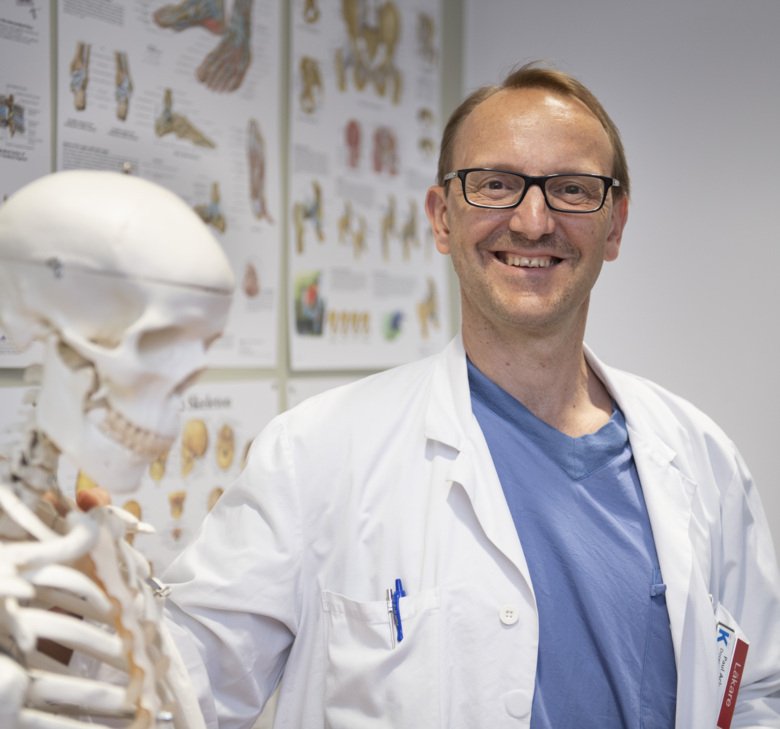Studying healing disorders in tendons and joints
Paul Ackermann is researching why problems often arise in the healing-process in tendons, ligaments, and other connective tissue in the locomotor system. His work can give rise to new therapies designed to help the injury to heal properly and prevent chronic pain and blood clots.

What are you researching?
“I’m an orthopaedic surgeon and my research relates to problems and complications following orthopaedic trauma, particularly in the soft tis- sues of the locomotor system. While a bone fracture usually heals very well, damage to its soft parts – such as tendons, ligaments, menisci, and vertebral discs – can cause lasting problems. Our research is particularly focused on the causes of disorders of the healing-process, chronic pain and blood clots and how they could be treated in the future.”
What does your research involve?
“In one of our projects, we are comparing two groups of patients who have undergone Achilles tendon surgery, one in which the injury healed properly and one in which it did not. We’re doing large-scale protein analyses, or proteomics, on tissue samples and synovial fluid and have discovered distinct differences between the groups. Another example of our work is a large intervention study on prophylactic treatment for blood clots during the healing of a lower limb injury. The risk of clotting when putting the lower leg in plaster is in some cases as high as 50 per cent.
Mechanical compression of the calf muscle has long been used in bedrid- den, hospitalized patients to prevent clotting, and in this multicentre study, we’re looking at whether the technique can be transferred to the home for self-care. Currently, clinics in three countries are involved in the study, which will comprise 1,400 patients.”
What about chronic pain?
“Chronic pain is very often linked to the very soft tissues we are researching, especially tendons. We’ve shown that the painful tendons often contain more nerve endings and pain receptors than healthy ones. The nerve endings grow into the tissue of a damaged tendon while it heals and then withdraw, but in chronic pain cases they have remained permanently extended. Our discoveries open the way to a better understanding of what can go wrong in the healing-process and to new potential therapies.”
About Paul Ackermann
Professor of Orthopaedic Traumatology at the Department of Molecular Medicine and Surgery
Paul Ackermann was born in Stock- holm in 1971. He took his medical degree at Karolinska Institutet in 1998, earning his PhD at the same university in 2001. In 2003 he did his postdoc research at the University of Calgary, Canada. He became a docent in 2009.
As a clinician, Ackermann obtained his MD licence in 2002 after a two- year research internship, becoming a specialist in orthopaedics in 2008. He worked at Karolinska University Hospital’s orthopaedic department between 2002 and 2013, and in 2014 was made deputy consultant at the hospital’s Trauma, Emergency Surgery and Orthopaedic Unit. He has been employed at KI on a part-time (50 per cent) contract since 2014. Paul Ackermann was appointed
Professor of Orthopaedic Traumatology at Karolinska Institutet on 1 June 2021.
Text: Anders Nilsson
First published in the booklet From Cell to Society 2021.
